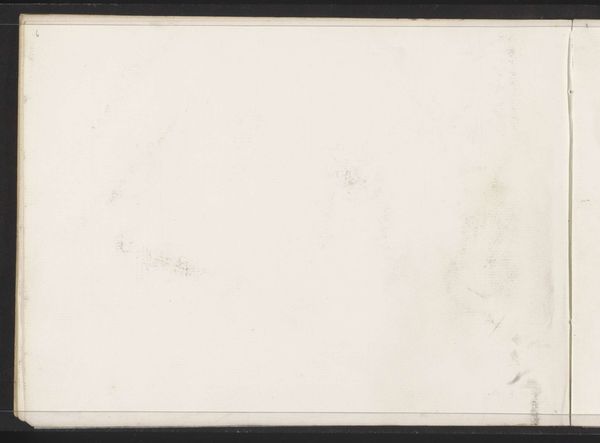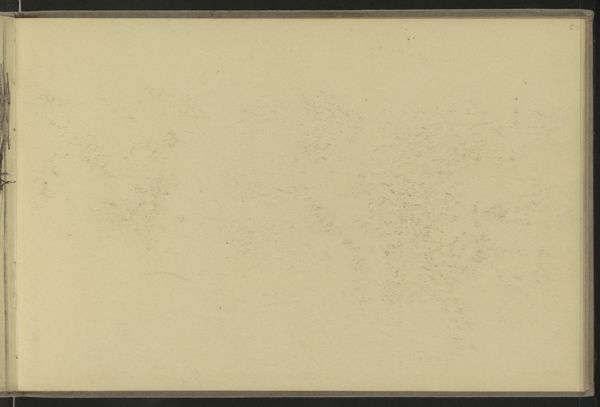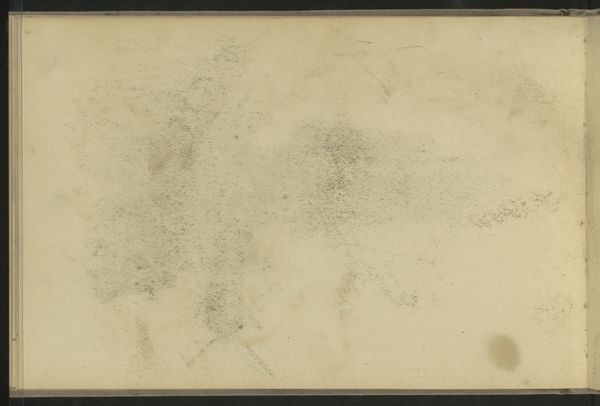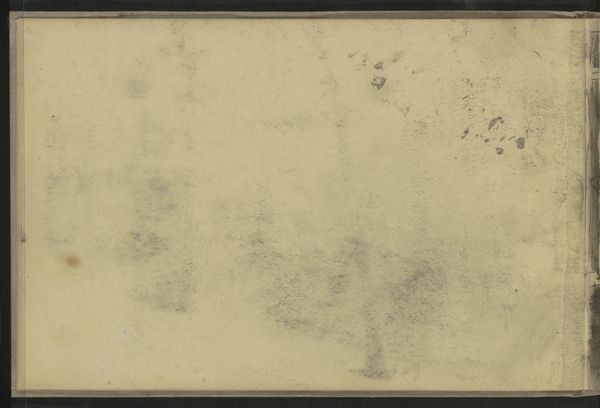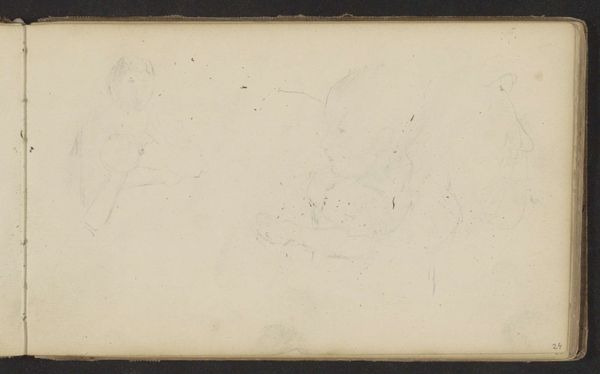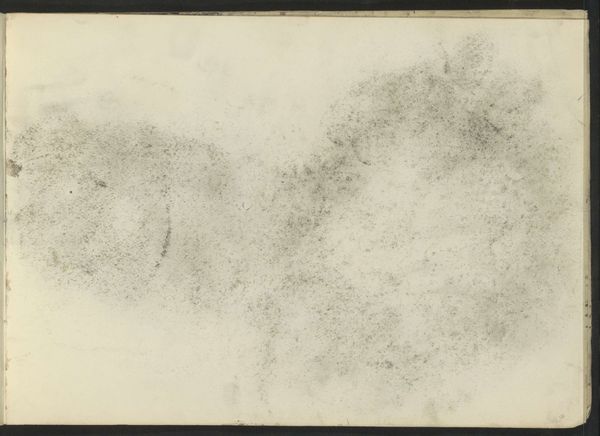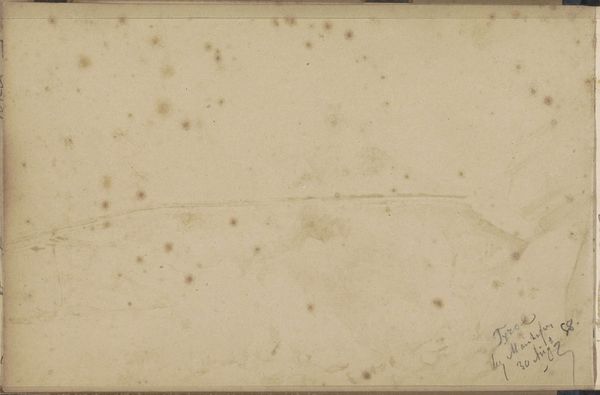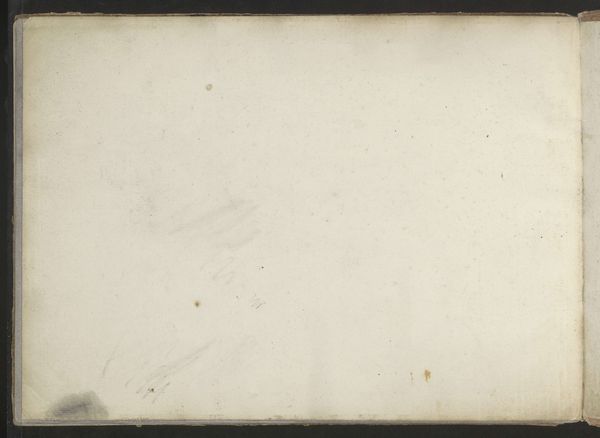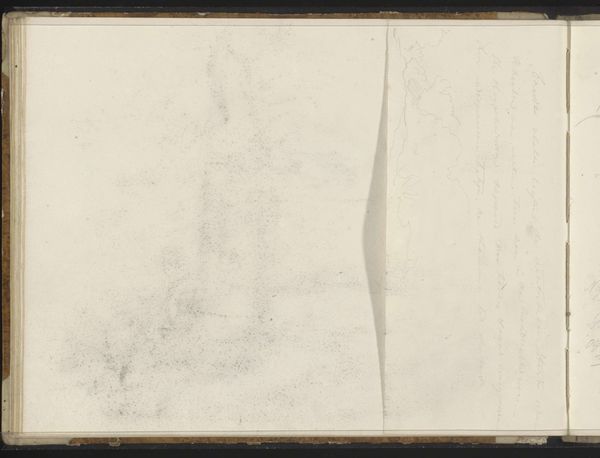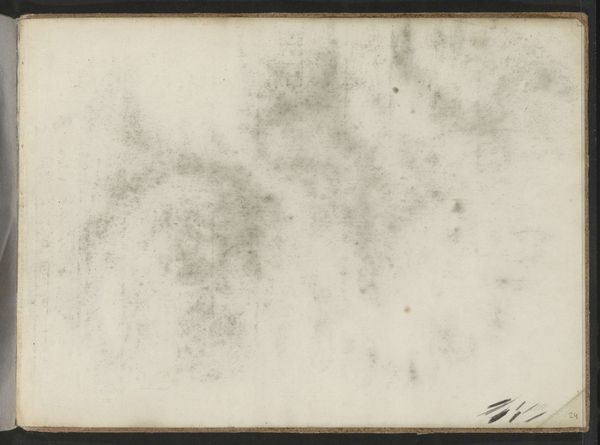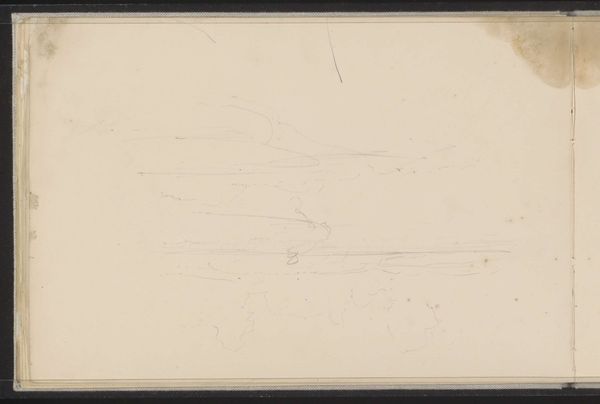
Copyright: Rijks Museum: Open Domain
Curator: This is a page, an "Abklatsch van de krijttekening op pagina 122", as the title indicates, from a sketchbook by Willem Witsen, created sometime between 1888 and 1907. Editor: It feels incredibly fragile. A ghost of an image on time-worn paper. Melancholic, even. What do you see here? Curator: It’s intriguing, isn’t it? Knowing it's a rubbing, or "Abklatsch," lends a sense of transience. It's like catching a fleeting moment, a memory barely held onto. Witsen wasn't just sketching; he was experimenting with capturing something ephemeral. Editor: That act of preservation, even if imperfect, is loaded. Witsen was working during a period of intense social change and industrialization. Was this artistic process a way for him to preserve or reflect on fading realities? Curator: Possibly. He had a deep connection to the Dutch landscape, its waterways, and quiet city corners. I think of the texture, too; the homemade, toned paper hints at intimacy, like stumbling across someone's private journal. You know, those faint lines could depict buildings or perhaps even a distant treeline, just about fading away into the very material. Editor: And that’s where it gets compelling. The paper itself becomes part of the narrative. Think of how marginalized communities, their histories often erased or “rubbed out,” also struggle to preserve their stories. It invites questions about who gets to be seen, whose stories remain visible. Curator: It does, doesn’t it? I also wonder about the role of the "original" drawing. Did it hold more importance, or did Witsen see the copy as its own independent piece, imbued with a unique aura? Almost like a musical variation of the same thing. Editor: This piece feels very immediate in some ways. Like a trace of an idea only half-formed. And perhaps Witsen wanted to preserve that specific state. Curator: Exactly. A fleeting notion made visible. It makes one contemplate on things left unseen, and those worth seeking in shadows. Editor: I appreciate how this seemingly simple sketch opens up bigger questions. It pushes beyond what's visible, into histories of memory and erasure. Curator: Yes. It also underscores the power of process, and the poetry within those often overlooked spaces where creation takes place. It’s like peering through a veil, sensing stories just beyond our grasp.
Comments
No comments
Be the first to comment and join the conversation on the ultimate creative platform.

